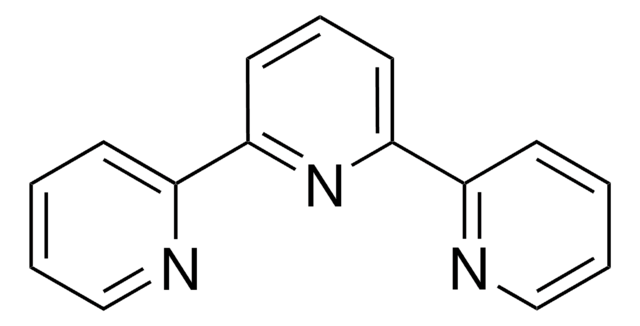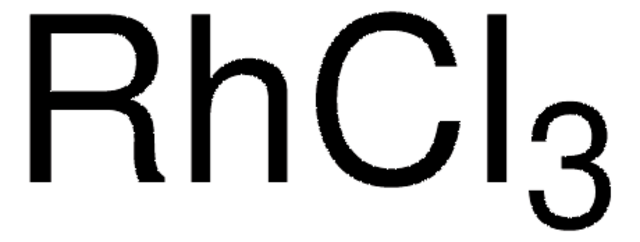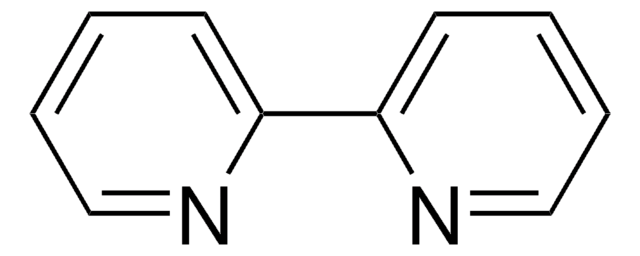Wichtige Dokumente
935484
Ruthenium(III)-chlorid
anhydrous, powder, 99.99% trace metals basis
Synonym(e):
Ruthenium chloride, Ruthenium trichloride, Trichlororuthenium
About This Item
99.99% trace metals basis
Empfohlene Produkte
Qualitätsniveau
Assay
40-50% Ru basis (gravimetric)
99.99% trace metals basis
Form
powder
specific gravity measuring range
6.97 g/mL
Verunreinigungen
≤150 ppm (trace metals analysis)
Farbe
dark gray to black
pH-Wert
1-2
Löslichkeit
water: soluble
Dichte
3.11 g/mL at 25 °C (lit.)
SMILES String
Cl[Ru](Cl)Cl
InChI
1S/3ClH.Ru/h3*1H;/q;;;+3/p-3
InChIKey
YBCAZPLXEGKKFM-UHFFFAOYSA-K
Suchen Sie nach ähnlichen Produkten? Aufrufen Leitfaden zum Produktvergleich
Allgemeine Beschreibung
Anwendung
Signalwort
Danger
H-Sätze
Gefahreneinstufungen
Acute Tox. 4 Oral - Aquatic Chronic 2 - Eye Dam. 1 - Skin Corr. 1B
Lagerklassenschlüssel
8A - Combustible corrosive hazardous materials
WGK
WGK 3
Flammpunkt (°F)
Not applicable
Flammpunkt (°C)
Not applicable
Hier finden Sie alle aktuellen Versionen:
Analysenzertifikate (COA)
Leider sind derzeit keine COAs für dieses Produkt online verfügbar.
Wenn Sie Hilfe benötigen, wenden Sie sich bitte an Kundensupport
Besitzen Sie dieses Produkt bereits?
In der Dokumentenbibliothek finden Sie die Dokumentation zu den Produkten, die Sie kürzlich erworben haben.
Unser Team von Wissenschaftlern verfügt über Erfahrung in allen Forschungsbereichen einschließlich Life Science, Materialwissenschaften, chemischer Synthese, Chromatographie, Analytik und vielen mehr..
Setzen Sie sich mit dem technischen Dienst in Verbindung.








